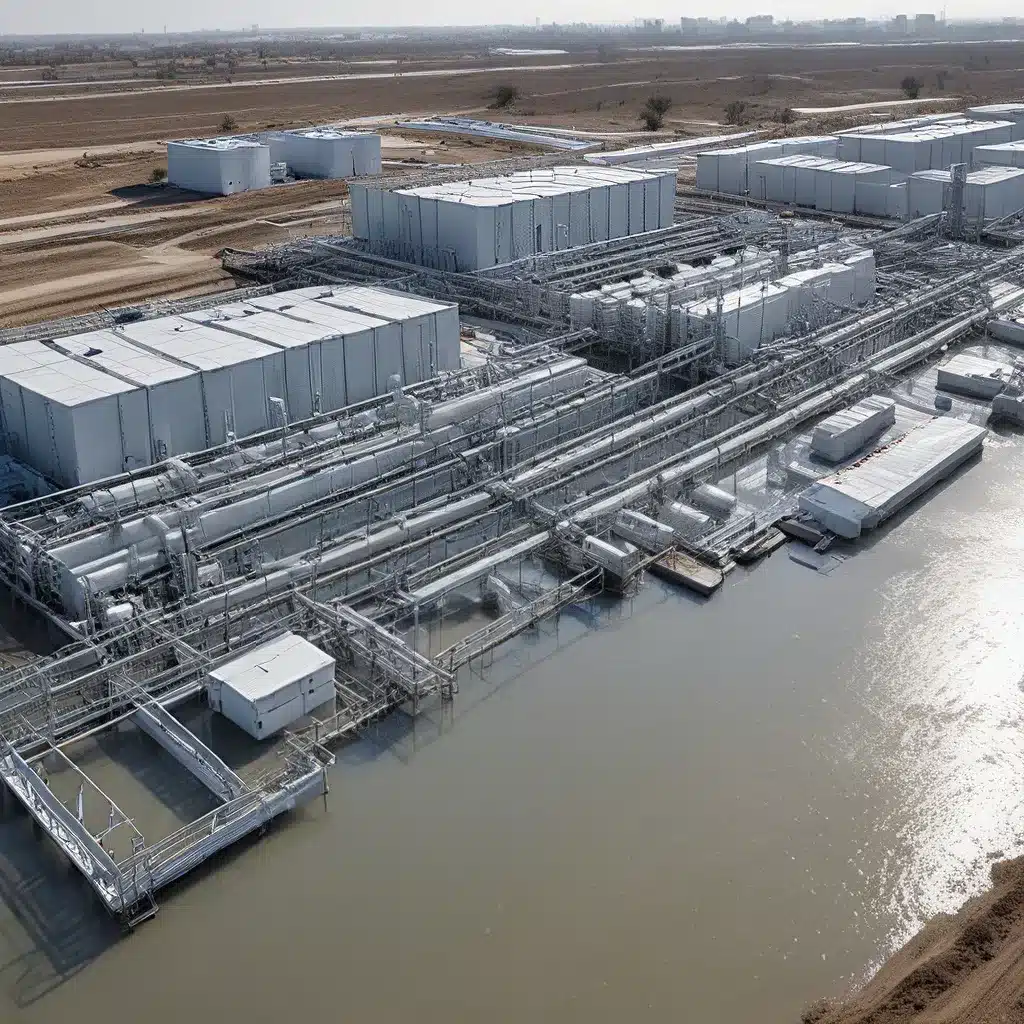
Battling the Torrents: Weathering the Storm of Uncertain Times
As I gaze out the window, the dark clouds loom ominously overhead. The rain is pouring down in sheets, battering the earth with relentless fury. It’s a scene that has become all too familiar in recent years – extreme weather events testing the limits of our infrastructure and challenging our ability to adapt.
But here at Inland Waters Inc., we’re not ones to be caught off guard. We’ve been preparing for these very moments, crafting innovative water treatment solutions that can weather even the most tumultuous of storms.
Safeguarding Our Most Precious Resource
Reflecting on the events of early 2024, I can’t help but feel a renewed sense of purpose. The powerful storms that swept through our region earlier this year were a stark reminder of the fragility of our water systems – and the critical importance of proactive planning.
“Recognizing that weather patterns will shift and cyclical droughts exist, we must continue to plan and invest in projects and programs that will enable the region to maintain confidence in the regional wastewater system and their water supply today and tomorrow,” as Shivaji Deshmukh, General Manager of the Inland Empire Utilities Agency (IEUA), eloquently stated.
Inspired by Deshmukh’s words, we at Inland Waters have doubled down on our commitment to securing long-term water supply resilience. It’s not just about maintaining the integrity of our infrastructure – it’s about safeguarding the very lifeblood of our communities.
Expanding the Local Supply Portfolio
One of the ways we’re tackling this challenge is by leveraging our resources and maximizing our water storage capacity. With nearly 30% of our water supply reliant on imported sources, we’ve been working tirelessly to expand our local supply portfolio.
The anticipated completion of the Regional Water Recycling Plant No. 5 (RP-5) Expansion Project in 2026 is a prime example of this effort. This milestone will significantly enhance our liquid treatment capacity, ensuring that we’re better equipped to handle the unpredictable demands of the future.
But that’s not all. We’re also eagerly anticipating the advancement of the Chino Basin Program (CBP), which aims to enhance water management and sustainability across the region. With the establishment of a new advanced water treatment facility, we’ll be able to contribute an additional 15,000 acre-feet (AF) of high-quality, advanced purified water to our groundwater supply.
Promoting Sewer-Smart Choices
Of course, maintaining the quality of our local water supplies is just as crucial as securing the quantity. That’s why we’ve placed a strong emphasis on consumer awareness and education through initiatives like the “Be Sewer Smart” campaign.
By targeting critical concerns related to Fats, Oils, and Greases (FOG) and non-flushable wipes, we’ve been able to mitigate damage to our sewer system infrastructure and protect public and environmental health.
“By promoting vigilance for the proper disposal of FOG and in identifying the ‘Do Not Flush’ symbol on wipes product packaging, we can foster sewer-smart choices and mitigate damage to our sewer system infrastructure at the forefront,” Deshmukh explains.
It’s all about empowering our community to be part of the solution – because when it comes to water resilience, we’re all in this together.
Weathering the Storm: Certified Operators and Emergency Response
But what happens when the unthinkable occurs? When a natural disaster or unforeseen emergency strikes, resilience is the name of the game. That’s why we’ve placed a strong emphasis on training and certifying our wastewater treatment facility (WWTF) operators.
As the New Hampshire Department of Environmental Services explains, “Owning and operating wastewater treatment facilities (WWTF) and collection systems represents a significant lifelong investment for any community. Protecting this investment requires that wastewater treatment facility operators be trained and certified to ensure they have the knowledge necessary to successfully carry out their job responsibilities.”
Our operators undergo rigorous training and certification processes, ensuring they have the skills and expertise to keep our systems running smoothly, even in the face of adversity. And when disaster does strike, we have a comprehensive Emergency Response Plan in place to guide our actions.
“Emergency response planning and preparedness is an important element in managing a wastewater treatment facility and collection system because of the potential extent of the impact that an emergency could have,” the NHDES notes. “The citizens of your town and our state rely upon wastewater treatment personnel for protection against unexpected events that may jeopardize public health and safety.”
Building a Resilient Future, Together
As I reflect on the challenges we’ve faced and the progress we’ve made, I’m filled with a sense of cautious optimism. The road ahead may be long and winding, but I know that with our innovative solutions, our highly trained operators, and our commitment to community engagement, we’re well-equipped to weather any storm.
After all, water resilience isn’t just about protecting our infrastructure – it’s about safeguarding the very foundation of our communities. And that’s a mission we’re proud to take on, come rain or shine.
So, let the torrents rage on. Here at Inland Waters, we’re ready to turn those raging waters into a source of strength and security for the people we serve. Because when it comes to liquid resilience, we’re in it for the long haul.


